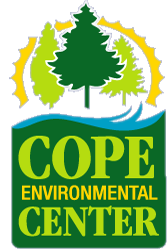INSTRUCTIONS SUCCESS CRITERIA >> READ ONLINE
The intent of this Success Criterion is to help users avoid making mistakes. Some users with disabilities may be more likely to make mistakes than users without disabilities. Using context-sensitive help, users find out how to perform an operation without losing track of what they are doing. Context-sensitive help only needs to be provided when Example 1: Critical Thinking Checklist The student… __ Accurately interprets evidence, statements, graphics, questions, etc. __ Identifies the salient arguments (reasons and claims) __ Offers analyzes and evaluates major alternative points of view __ Draws warranted, judicious, non-fallacious conclusions Success criteria: Draw a 3 x 3 grid Partition the numbers and put them in the correct boxes Multiply each number together Add up the four numbers you are left with In writing this success criteria, the teacher is giving step-by-step instructions on how to carry out the grid method. Instructions + success criteria Your mission is to imagine, write and then play out in front of the class your typical English lesson. You will be assessed, in groups, on your ability to interact in an authentic class situation. Each member of the group will have to speak as much as the others and use as many expressions from the lessons as Learning intentions and success criteria examples. Some l earning intentions and success criteria examples are: My report has an introduction, main body and conclusion. I have used full stops at the end of my sentences. I can answer questions accurately about my eight times table. I have used the present tense correctly. Instructions are useful for providing orders on how to achieve something. Normally written as an easy-to-follow guide, instructions provide the reader with step by step orders. Instructions usually contain lots of imperative (bossy) verbs such as go and stop. The above video may be from a third-party source. Project Success Criteria Measurement Traps You ought to guard against some common pitfalls that project managers can fall victim to. Generally speaking, there are two types of snares. 1. The criteria If they are conflicting, there will be confusion as you progress, and not clarity. If they are too few, you may forget about other important issues. Success Criterion 1.3.2 Meaningful Sequence (Level A): When the sequence in which content is presented affects its meaning, a correct reading sequence can be programmatically determined. Intent The intent of this Success Criterion is to enable a user agent to provide an alternative presentation of content while preserving the reading order The instructions for completing the form indicate that "all required fields are displayed in red and marked with an asterisk *", followed by an example. F42: Failure of Success Criteria 1.3.1, 2.1.1, 2.1.3, or 4.1.2 when emulating links; When writing across the curriculum, use the success criteria from previously taught writing skills so that children produce work of the same high standard. (Eg Year 4 children writing instructions in science - help them to write GOOD instructions by providing them with the success criteria you used the last time they wrote instructions). Descriptive labels help users identify specific components within the content. Labels and headings do not need to be lengthy. A word, or even a single character, may suffice if it provides an appropriate cue to finding and navigating content. This Success Criterion does not requir
Comment
© 2025 Created by G1013.
Powered by
![]()


You need to be a member of generation g to add comments!
Join generation g